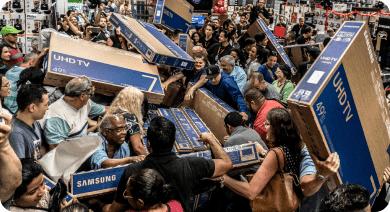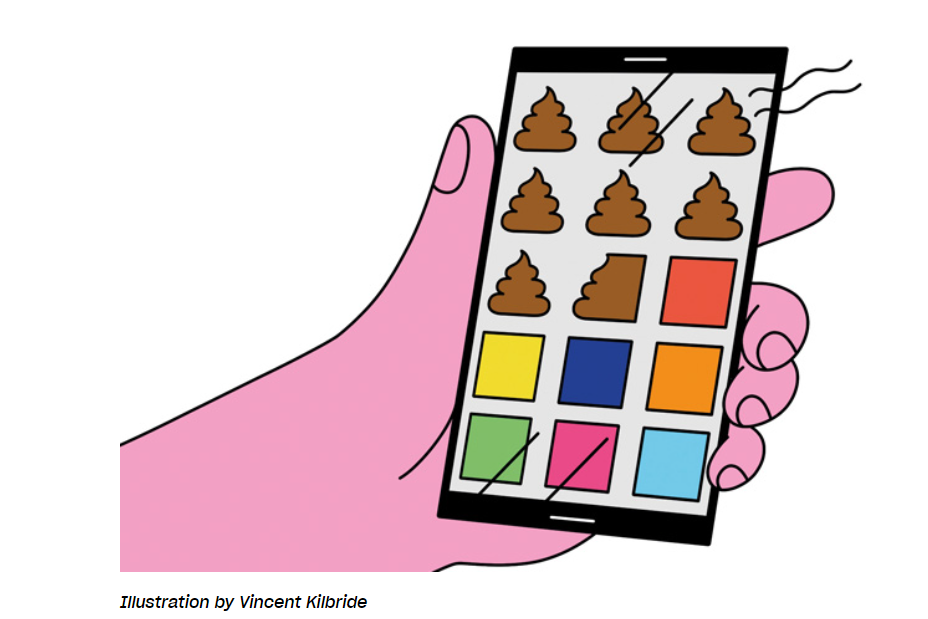Stop Trusting Black Friday Guides

Author
Lean Convert
Published
While Black Friday may have started as a post-Thanksgiving shopping trip for American families, it has evolved into what is for many retailers the biggest shopping period of the year (by far). Adobe Analytics reports that in 2020, consumers spent around $9 billion shopping online over the Black Friday period, which was a whopping 21.6% increase over the previous year.
While this specific year was of course marked by COVID–which we all know pushed shoppers toward eCommerce rather than shopping in-store–the upward trend in spending has been consistent year-over-year, especially as Black Friday becomes increasingly popular outside of the US.
Naturally, business owners are anxious to avoid leaving money on the table when consumers are clearly dying to spend it. Thus, there’s an incomprehensible number of articles, books, podcasts, and so on explaining exactly what you should be doing to capitalise.
The problem is: the information you’re finding doesn’t necessarily work for your business.
While there are certain universal truths and best practices (don’t worry, we’ll get to that), Black Friday is not a one-size-fits-all ordeal. When looking at our own clients here at LeanConvert, we’ve seen how divergent customer behaviour calls for each business to personalise their own approach to the holiday season.
In order to figure out your specific approach, here are a few questions to consider.
When is the most important part of the Black Friday shopping period?
Research easily shows us that Black Friday has gone from being a single day to a whole month. While this started with add-ons like Cyber Monday, it has now become an expanded, multi-week shopping extravaganza for consumers who’ve grown to expect deals for an elongated time.
One thing this research often doesn’t mention? That the actual Black Friday weekend–which takes place immediately after the last Thursday in November–is still where we see the most spending by far.

The graph opposite illustrates average daily revenue for an eCommerce client of ours. You can see the month before Black Friday (blue), the week before (red), the day of Black Friday (yellow), the week after (green), and then the month after (orange). Together, this forms what we at LeanConvert like to call “The Middle Finger of Black Friday.” And this isn’t a one-off; we’ve seen this trend with most of our eCommerce clients.
So what might this middle finger mean for your business?
“While the articles are right–the Black Friday period is now much longer–you can to optimise your marketing efficiency by still focusing on Black Friday itself, depending on your own customers’ spending behaviour,” says Marvin Amm, Leanconvert’s Analytics and Insights Specialist.
The takeaway here is that you should test how your customers react to a longer Black Friday season before investing in spreading your efforts out across an entire month.
What if your average order value goes down?
It makes sense that your average order value will go down on Black Friday. It is, after all, a shopping period marked by sales and coupons galore. People are quite literally shopping because the prices have gone down.
“It’s true that Black Friday is typically an assault on your margins,” says Stuart Nelson, Client Services Director at LeanConvert. “Revenue looks great but really it’s the profit we are looking for. What are you doing to make up for lost margins?”
As a business, you should be experimenting with how to increase your average order value while still pulling in customers with good deals. Is there an offer you can make around shipping that might entice them to buy more than one item? Could bundling a bunch of deals together encourage them to make bigger transactions while still feeling satisfied that they’ve gotten a good deal? Will suggesting full-priced items next to discounted items encourage visitors to purchase things that weren’t on sale?
“You might be making more money, but are you getting customer loyalty?” asks Nelson. “You should be using this period to come up with loyalty deals–ways to get new customers to keep coming back, so that it’s not just a singular drive-by purchase over the holidays, only for them never to be seen again. It’s worth remembering that the December holidays and Valentine’s Day, two other crucial shopping periods, are just around the corner.”
Are you getting new customers through Black Friday?
It’s important to consider the type of customers that are actually shopping on your site during Black Friday. If, for example, you are noticing that a vast majority of those making transactions are returning customers, it’s likely that your existing customers are simply waiting until the sales period to purchase items they would have purchased at full-price otherwise.
“You might be making more money, but are you getting customer loyalty?” asks Nelson. “You should be using this period to come up with loyalty deals–ways to get new customers to keep coming back, so that it’s not just a singular drive-by purchase over the holidays, only for them never to be seen again. It’s worth remembering that the December holidays and Valentine’s Day, two other crucial shopping periods, are just around the corner.”
Alternatively, if you’re getting new customers, this means the possibility of a long and fruitful relationship with shoppers who might never have engaged with your site had you not encouraged them in with holiday deals. This means more data, more emails, and more people who are interested in your particular business.
Are you treating different markets as if they’re the same?
Yes, Black Friday has become an international affair, just like New Years. But does New Years Eve in Beijing look the same as London or New York City? Of course not!
“Black Friday has no relevance in the UK or Europe in terms of its background or meaning,” says Nelson. “You have to take into account that this means Europe and the US, for example, have completely different contextual understandings of the shopping period. They are not going to behave in the same way. For example, in Europe, Black Friday is mostly thought of as Christmas shopping.”
Black Friday’s increasing popularity across the globe (and particularly western countries) has led many companies to offer the same types of deals to vastly different countries and communities, providing blanket offers that could be incredibly appealing for some consumers while completely irrelevant to others.
As awareness around Black Friday increases internationally, it’s important to continue testing how different markets are responding to your particular business during this time period.
A universal truth about Black Friday
The whole point of this article is to suggest that no company should assume that any Black Friday strategy someone finds online will apply to their specific business. In particular, we’re listing the above questions as examples of what to ask yourself when developing your own approach. The answers will vary dramatically depending on what you sell, where you are, the audience you’ve built up, etc.
That said, there is at least one point that is valid for everyone: No company should be thinking of Black Friday as existing within a vacuum. Optimisation is ongoing, meaning that this sales period is not just one for driving impressive revenue, but for collecting as much information about your customers as possible. Data and email addresses are gold for forming long-term relationships and better CX for shoppers.
“The biggest mistake you can make with Black Friday is totally missing out on it,” Nelson concludes. “The second biggest mistake would be making assumptions based on research that’s not unique to your specific company. Just as we believe in personalising each and every experience for your customers, so too should you be personalising your own approach and strategy. Crucially, you should be thinking about how to use this period to benefit and optimise in the longer run, rather than focusing solely on November revenue.”
To learn more about testing your CX for Black Friday, you can contact us here.











